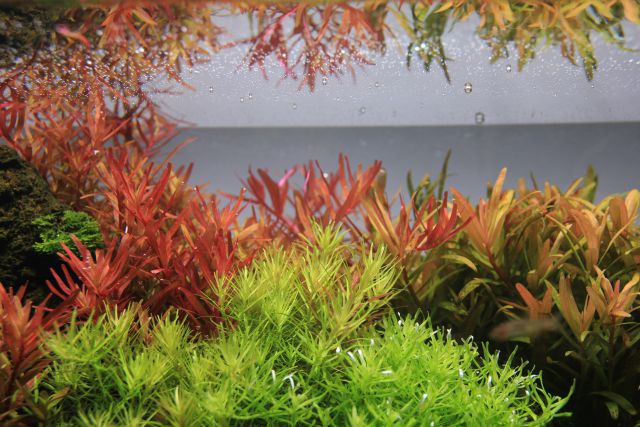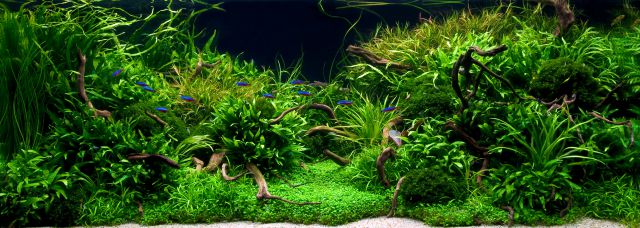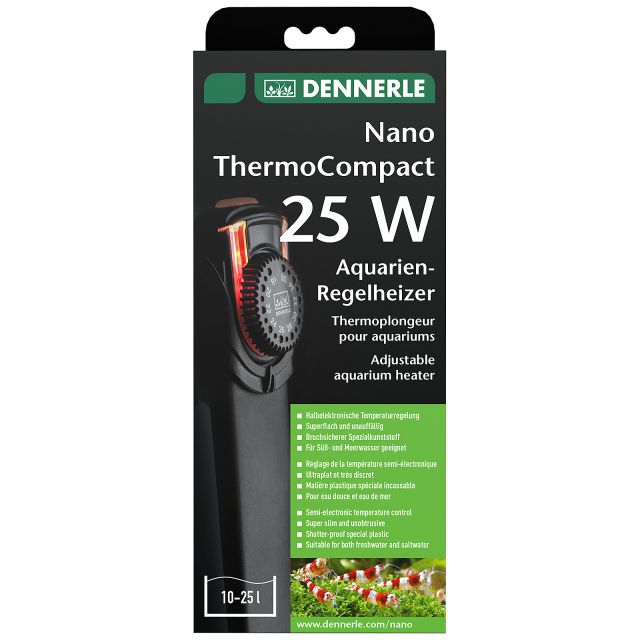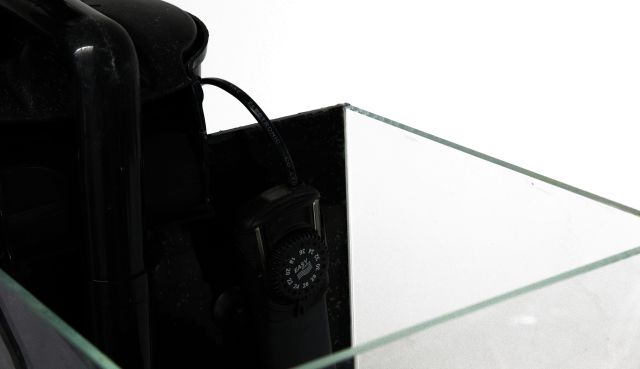The motto of aquascaping is to turn an aquarium layout into a living work of art. Necessary but optically less than pleasing equipment inside the aquarium such as the heater, the filter and its inflow and outflow is often replaced by external components like (inline CO2 diffusers, external heaters) or by items made of transparent material (glass CO2 accessories and filter inflows and outflows). We have already covered this in detail in our article "Technical aquarium equipment". However, we'd like to share some simple tricks how to skillfully hide the aquarium tech you already have in the following.
Aquatic plants
Especially high-growing background plants are nicely suited to mask longish items like e.g. heaters. Even the filter equipment can be hidden behind a wall of plants. However, special care should be taken with the filter inlet: If the plants grow too close to the inlet, the leaves can be sucked in and clog the inlet slots, which would severely reduce the filter function. If your aquarium layout doesn't permit keeping a certain distance, it is better to use other aquarium decoration as a cover for the filter inlet (see next section).

Hardscape
While aquarium plants are a rather dynamic decorative element in an aquascape that changes with time, stones and roots are rigid. The technical jargon for these elements is "hardscape”. Here, too, higher structures can be used to obscure parts of the technical equipment inside the aquarium. When planning your layout, make sure you leave sufficient space behind the hardscape.
Planning
When you design your aquarium layout, a long time before you actually set the tank up, consider the position of the technical accessories in your aquarium. This will enable you to draw conclusions about how to best arrange the aquatic plants and the hardscape. For this you should get acquainted with the three basic aquascape layout forms.

If aquarium equipment is to be installed on both sides of the tank, a layout in a U-shape is highly recommendable. Equipment installed on just one side allows you to use a triangular design. The central shape is not very suitable for hiding technical objects, since you rarely place heaters and filter tubes in the middle of the tank. Here you’d constantly have the cables and hoses in view while looking at the aquarium.
Submersible heaters
Small, compact heaters that are completely submersible can be positioned particularly flexibly. A vertical heating rod is not always a visual advantage. Especially in nano-aquariums with little height you can install such heaters at an oblique angle or even horizontally - always given that they are suitable for being mounted this way. Please refer to the manufacturer's instructions before installation.

The Dennerle Nano ThermoCompact is an adjustable heater that can be completely submerged down to a depth of 80 cm.
A good alternative, especially for larger aquariums, is the use of a thermo filter. External filters by Oase can be retrofitted with a HeatUp heating rod, for example.
Screens
With the right color choice a back screen can cover up heaters, filters and such, even if you do not have the possibility to hide the technology behind natural decoration materials. A black filter and heater combined with a black screen in the back of the tank form an optical unit due to having the same color.
